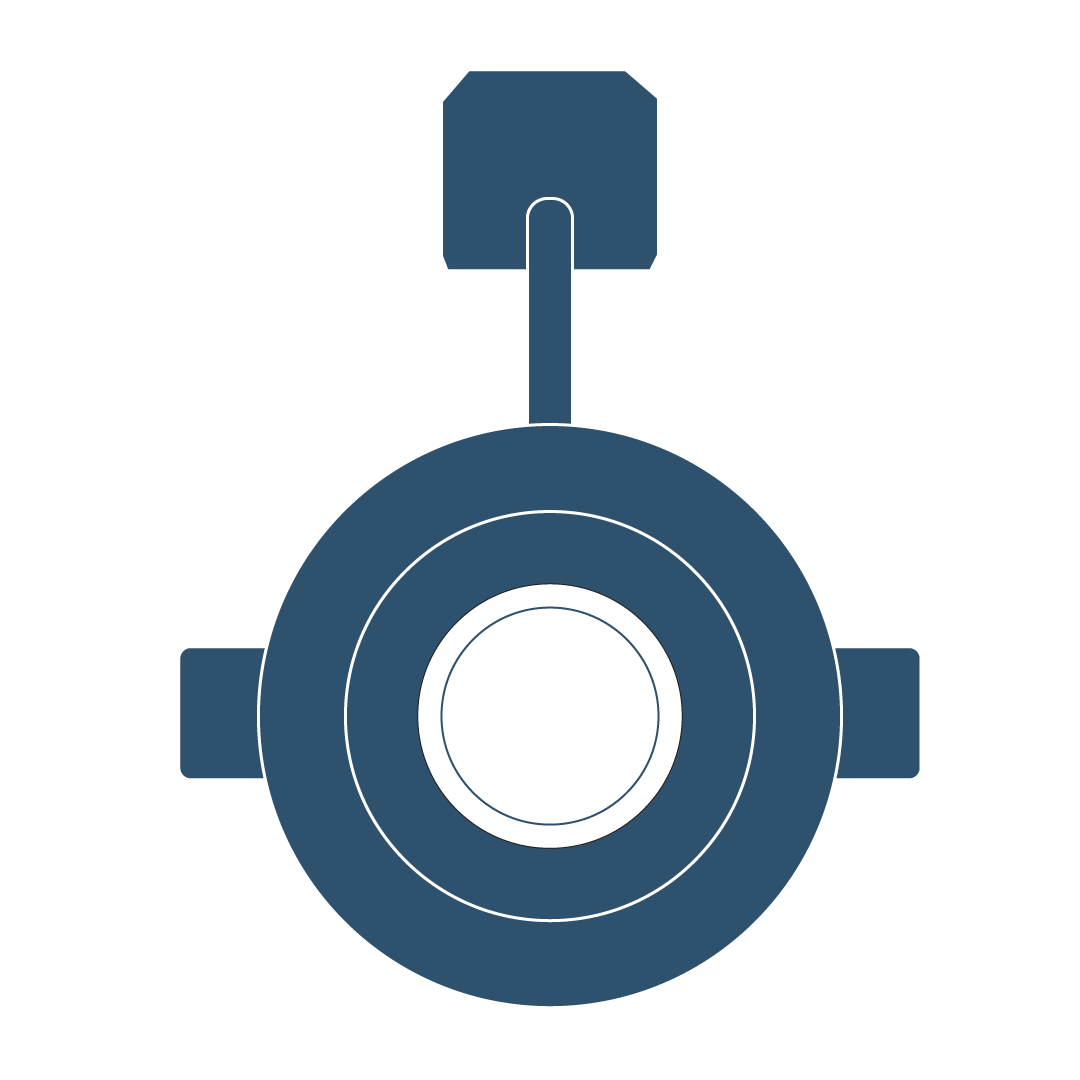LED Downlights – Stylish, Efficient Lighting for Every Room
LED downlights (downlighters or recessed ceiling downlights) are a fantastic choice for providing your room with a sleek and minimalistic finish. It offers a style of lighting that is especially popular amongst contemporary interiors - this is attributed to the lights being positioned within the ceiling itself. This allows for a perfect, discrete fitting for an unobtrusive presence.
This has resulted in recessed lighting becoming a common component in most homes. Most modern homes nowadays heavily imply the use of LED lighting due to their wealth of benefits compared to other incandescent lights. One such benefit is the fact that the average LED light bulb can last anywhere from 50,000 hours. Another incredible safety feature is the fact that most LEDs can be installed near water - and, in most cases, fully submerged.
For instance, can be placed directly above a shower to light up your bathrooms. Or they can be installed above your stove for safer cooking. These rooms are best suited for cool white lights that provide a sharp and intense lighting solution. However, warmer lighting options are also available. LED downlights come in warm white (ideal for cosy living rooms or bedrooms), cool white (suitable for kitchens and bathrooms), and daylight tones (perfect for workspaces or task lighting).
Warm white is an excellent choice for a bedroom or living room, providing a softer ambient feel to the atmosphere. Additionally, a dimmable LED downlight is available. It can be dimmed using traditional analogue controls or via mobile phone or tablet devices.
It is also worth noting that mains-powered and low-voltage LED downlights are not just for your home. As a result of the ever advancements in technology, this has enabled the possibility of LEDs being brighter than any other lighting solution currently available. In addition, its versatility makes it suitable for commercial operations.
The minimalist and unobtrusive design means that they can be installed with minimal disruption to an office space. This ultimately provides better quality lighting capabilities at significantly lower costs. The lower energy consumption of LEDs - guarantees that your utility bills are reduced, coupled with the fact that you are contributing to lowering your carbon footprint. Lower electricity bills and longer bulb life make LEDs a smart, cost-effective lighting choice for any home or workplace.
What is an LED Downlight?
In essence, an LED downlight is a light fitting that illuminates in a downward direction to brighten an area directly below. They are typically recessed into the ceiling, offering a clean and minimalist finish that suits modern interiors. They are most commonly recessed into the ceiling, so you only see a small part of the fitting below the ceiling.
Downlights are versatile light fittings that offer several uses throughout a plethora of different rooms. They are also great ways to create zones, navigate around a room's space, and highlight key areas—such as artwork or photos.
This lighting fixture often uses LED bulbs as they offer the best light quality, as well as dimming options. Also, there are integrated downlights that already have built-in bulbs within the fitting and are considered one of the best LED downlights for home. LED stands for Light Emitting
Diodes, which means that they are energy-efficient lighting systems that use far less energy than standard filament bulbs.
LEDs come in various types, but downlights are also known as recessed bulbs. It’s so because they are fitted into artificial recesses or in your ceiling. Due to this, they are stylish and unobtrusive, which makes them an extremely popular choice for modern interior design.
Dimmable LED Downlight:
In comparison to other energy-efficient bulbs, some models of LED downlights are dimmable. Dimming your fixture allows you to adjust the lighting level depending on what time of day it is.
The dimming feature is also helpful for setting a more intimate feel when dining or relaxing. So, whether you have cool white or warm white LED colours, you can set it to create a cosier environment. As an additional bonus, dimming lights means that they aren’t always working at full power - saving power consumption. Note that separate equipment and drivers are required to use the dimming features.
Smart LED Lighting: Where Can LED Downlights Be Used?
LED downlights are extremely versatile and can be used in almost every room. Popular placements include kitchens, bathrooms, living rooms, hallways, and offices. They’re ideal for task lighting in food prep areas, ambient lighting in lounges, or even accent lighting to highlight artwork or architectural features.
Smart LED Lighting:
Another excellent feature of modern downlights is that you can now use them with smart devices such as iPhones or tablets - whichever you prefer. With the release of popular assistants such as Alexa, Siri and Google - you can turn your lights on or off as you would expect.
You can also dim, change the colour and even adjust the temperature at the touch of a button. These adjustments can even be done with your voice. Unfortunately, not all mains-powered or low-voltage LED downlights can connect to other devices.
GU10 LED Bulbs
The most common type of bulb for downlights is the GU10 LED bulb. More accurately, GU10 refers to the cap fitted to the bulb. GU10 bulbs are directional and focused, which means they can be used for almost any lighting project. In addition, modern GU10 bulbs come in a wide variety of wattages.
Higher wattage solutions dispel the outdated misconception that they lack luminosity. With the correct wattage selection and installation, GU10 LED bulbs can provide vastly improved lighting over any other incandescent or fluorescent type.
Choosing LED Downlights for Energy Efficiency and Aesthetics
Installing LED downlights into your mains is not an easy task for an amateur, and understanding home electrics and electrical lighting is required. Depending on the model, you may or may not need a transformer. Additionally, different types of LED lighting need to be wired either in parallel or in series. Connection to a direct (DC) source will extend the life of your LED lighting systems.
Rather than describing how to wire a downlight, we advise that you consult a qualified electrician. Electrical outlets are dangerous and shouldn’t be touched if you don’t know what you are doing.
How Many Downlights Do I Need?
The number of mains-powered or low-voltage LED downlights that you need depends on which room they will be used in and for what purpose they will serve. For example, will they be used as the primary lighting source or for a particular task? You may wish to install an LED downlight as the primary lighting source across your living room or to highlight your food preparation area in your kitchen.
Therefore, multiple low-wattage bulbs are required as a primary lighting source. In contrast, focus lighting might only need one high-wattage bulb. You must also take room size and ceiling height into consideration. A higher ceiling requires fewer bulbs, while a lower ceiling or fixture may need fewer.
A simple formula for calculating the wattage required is ceiling footage 2x 1.5.
How To Remove A Downlight?
Removing LED downlights is not quite as simple as with a standard bulb, but it is relatively easy once you get the hang of it. However, the flexibility of a downlight means that you can fit them into hard-to-reach places like under cabinets, cupboards and even under the kitchen sink.
The lighting fixture also plays a major role in how you should remove it. There are various mechanisms for downlighting:
Notch/Groove:
This mechanism requires two people. While one person places pressure on the base (push towards the ceiling), another person needs to twist the LED dome to detach.
Spring-Loaded:
LED downlights that are spring-loaded require you to be a little more careful, as the base and dome might be fitted firmly with tightened springs. Tease a flat-head screwdriver in between the base and the ceiling and pry it enough so that you can easily fit your fingers in to pull it off.
Slotted Connectors:
Disconnecting from slots is relatively simple as it uses a simple locking mechanism whilst also using bumps and grooves. You should make sure to twist the dome so it unlocks and then gently pull it away from the base.
Flush Mount:
Flush mount LED downlights are the easiest to dismantle since it uses a screw mechanism. You need to locate the finial (the small screw in the centre of the dome) and turn it counterclockwise to unscrew it from the ceiling.
-
 Fire Rated, LED, GU10, Dimmable Downlight, Fixed - Various Finishes, Incl Quick Connectors£3.96 £4.75 Was £5.95 Save £1.20
Fire Rated, LED, GU10, Dimmable Downlight, Fixed - Various Finishes, Incl Quick Connectors£3.96 £4.75 Was £5.95 Save £1.20 -
 Fire Rated Downlight, GU10, Fixed - White Finish, With Quick Connectors£3.96 £4.75 Was £5.95 Save £1.20
Fire Rated Downlight, GU10, Fixed - White Finish, With Quick Connectors£3.96 £4.75 Was £5.95 Save £1.20 -
 Dimmable, Fire Rated, Adjustable GU10 Downlight in Brushed Chrome, White or Chrome£4.96 £5.95 Was £7.95 Save £2.00
Dimmable, Fire Rated, Adjustable GU10 Downlight in Brushed Chrome, White or Chrome£4.96 £5.95 Was £7.95 Save £2.00 -
 6w IP65, Short Can Dimmable, Fire Rated Downlight - White, Black or Brushed Chrome Bezel£6.04 £7.25 Was £11.99 Save £4.74
6w IP65, Short Can Dimmable, Fire Rated Downlight - White, Black or Brushed Chrome Bezel£6.04 £7.25 Was £11.99 Save £4.74 -
 Fire Rated Downlight, GU10, Brushed Chrome/Satin Nickel With Quick Connectors£4.12 £4.95 Was £6.25 Save £1.30
Fire Rated Downlight, GU10, Brushed Chrome/Satin Nickel With Quick Connectors£4.12 £4.95 Was £6.25 Save £1.30 -
 Fire Rated Downlight, GU10, Fixed - Polished Chrome Bezel, With Quick Connectors£4.12 £4.95 Was £6.25 Save £1.30
Fire Rated Downlight, GU10, Fixed - Polished Chrome Bezel, With Quick Connectors£4.12 £4.95 Was £6.25 Save £1.30
How To Change A Downlight Bulb?
You can expect your LED downlight to last for around 50,000 hours, although you may need to replace them at some stage. Regarding the process of removing an LED bulb, this is a fairly similar approach to removing a downlight.
To replace an LED bulb, whether they’re mains-powered or low-voltage LED downlights, various techniques will be required depending on the variety. However, the most appropriate methods are fairly self-explanatory without expertise or special tools.
Spring Clip:
For downlights with a spring clip bulb, remove the bulb by undoing the clips that hold the bulb in place. Once undone, you should gently pull the bulb out of the socket. You should take note that some fixtures might require an anti-clockwise turn.
To install a new bulb, you need to insert it into the socket and turn it clockwise. If required, hold it in place while you reattach the clips to hold it in place.
Twist Face:
You need to take a little more care when removing a twisted faceplate, as it can drop with the bulb still attached. To remove this style of plate, you need to twist the plate anti-clockwise, once twisted - it should detach from its fixture.
To replace the bulb:
- Unfasten the clip and unscrew the LED bulb.
- Replace it with your new one.
- Secure the bulb with the clips and then twist the plate back onto the fixture.
Removable Faceplate:
This faceplate is probably the trickiest kind to replace, and it is normally found in bathroom LED downlights. It would be best to detach the plate from the ceiling using an object like a small flat-head screwdriver.
Carefully insert the screwdriver into the gap between the plate and the ceiling, then apply gentle pressure to release the fitting. Next, detach the bulb by unclipping it from the fixture.
You can then insert your new LED bulb by attaching it to the fixture and securing it with the clips.
Then, reattach the faceplate in the same way you removed it.
How Many Downlights Per Room
It’s natural to feel excited when you find the best LED downlights for your home. However, you should not mindlessly purchase and take time to consider. The quantity you will need is dependent on your personal preference, first and foremost. In addition, you need to assess how large the room is as well as what the purpose of the room is.
Also, the functionality of the LED downlights is important, whether they will be used to complement the décor, as ambient light, or for utility purposes. These considerations will determine the bulbs’ wattage, colour and temperature.
The size of the room in terms of the ceiling height and the height of the lighting fixtures are also things that you need to consider. The reason for this is that they will affect the impact this fixture will have on the room(s).
Although, you can figure out how many lights you require with the below calculation:
- Measure the square footage of the room - you can do this by multiplying its depth and its width.
- Multiply the result of the aforementioned step by 1.5 - this will provide you with the wattage needed to illuminate the designated space.
As a standard rule, LED downlights should be placed roughly 2 feet away from the walls as well as spaced 3 to 4 feet from each other. To precisely understand the distance between the lights - divide the height of your ceiling by two. For instance, if your ceiling is 7 feet high, the lights should be placed 3.5 feet apart.
Need More Information On LED Fire Rated Downlights
If you have any questions regarding fire rated LED downlights - do not hesitate to get in touch with us today. A member of our team will be more than happy to assist you in choosing the right LED option for your needs, whether it be at home or in the workplace.
With excellent prices and high-quality products - Simple Lighting will brighten your day.





































